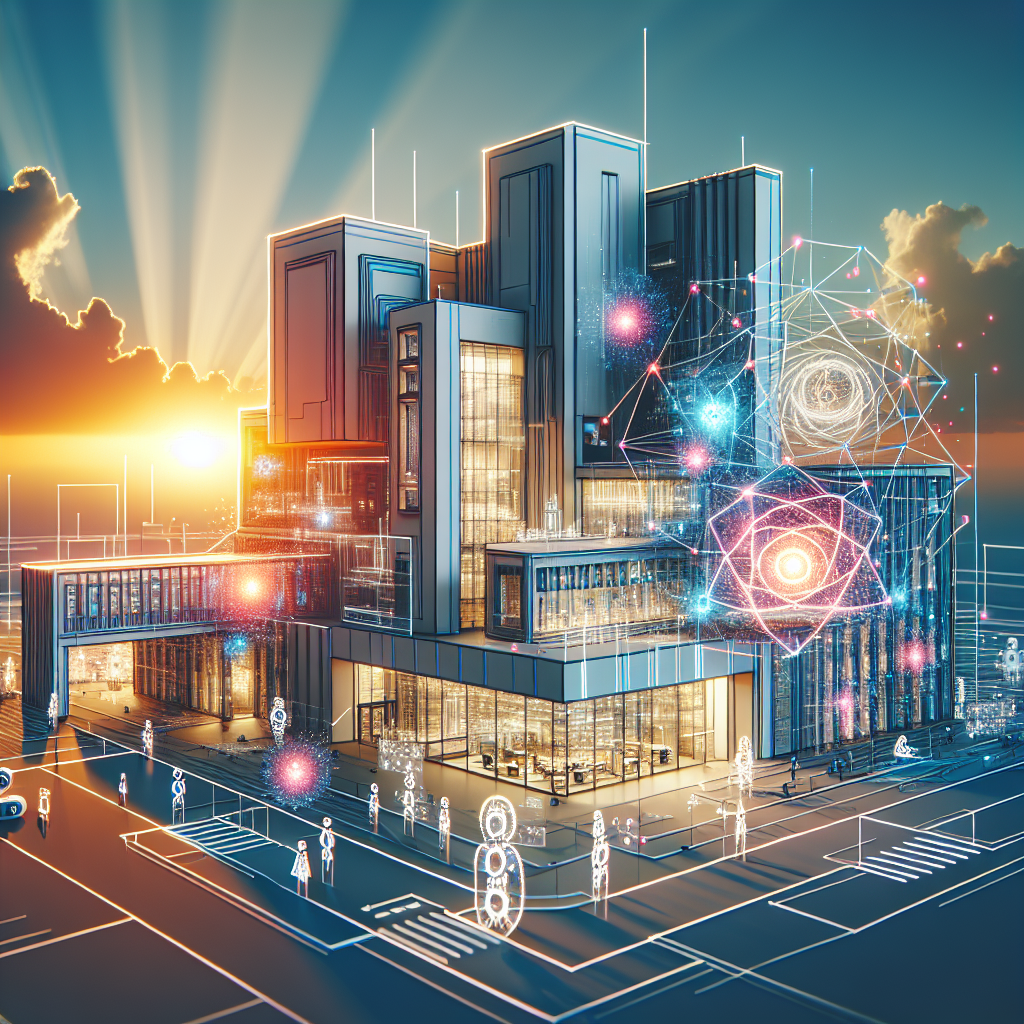The Future of AI in Educational Architecture
In recent years, artificial intelligence (AI) has made significant strides in various industries, including education. The integration of AI in educational architecture has the potential to revolutionize the way we design and construct learning environments, ultimately enhancing the overall educational experience for students and teachers alike. In this article, we will explore the future of AI in educational architecture, its benefits, challenges, and potential implications for the future of education.
Benefits of AI in Educational Architecture
One of the key benefits of integrating AI into educational architecture is its ability to optimize the learning environment for students. AI can analyze data on student behavior, preferences, and learning styles to create personalized learning experiences tailored to individual needs. For example, AI can adjust lighting, temperature, and acoustics in classrooms to create an optimal learning environment for each student, enhancing their concentration and focus.
AI can also help educators and school administrators make more informed decisions about space utilization and design. By analyzing data on student traffic patterns, classroom usage, and learning outcomes, AI can provide insights into how spaces can be optimized for learning. This can lead to more efficient use of space, reduced energy consumption, and cost savings for educational institutions.
Furthermore, AI can enhance safety and security in educational facilities. AI-powered surveillance systems can monitor school premises for potential threats, such as intruders or suspicious behavior, and alert authorities in real-time. AI can also help schools quickly identify and respond to emergencies, such as fires or medical emergencies, improving overall safety for students and staff.
Challenges of AI in Educational Architecture
While the potential benefits of AI in educational architecture are substantial, there are also challenges that must be addressed. One of the main challenges is privacy and data security. As AI collects and analyzes large amounts of data on students, there are concerns about how this data is stored, accessed, and protected. Schools must ensure that they have robust data privacy policies in place to safeguard student information and comply with regulations such as the Family Educational Rights and Privacy Act (FERPA).
Another challenge is the potential for bias in AI algorithms. AI systems are only as good as the data they are trained on, and if the data contains biases or inaccuracies, the AI system may produce biased or unfair outcomes. This is particularly concerning in educational settings, where AI could inadvertently perpetuate existing inequalities or stereotypes. Schools must carefully evaluate AI systems to ensure they are fair and unbiased in their decision-making processes.
Additionally, there is a concern about the impact of AI on the role of educators. While AI can enhance and complement the work of teachers, there is a fear that it could replace human teachers altogether. It is important for schools to strike a balance between AI and human interaction in the classroom, ensuring that teachers remain at the center of the educational experience.
Implications for the Future of Education
The integration of AI in educational architecture has the potential to transform the way we design and experience learning environments. In the future, we may see AI-powered classrooms that adapt in real-time to meet the needs of individual students, creating personalized learning experiences that maximize student engagement and achievement. Schools may also use AI to design more sustainable and energy-efficient buildings, reducing their environmental impact and operating costs.
Furthermore, AI could enable schools to offer more flexible and adaptive learning environments, allowing students to learn at their own pace and in their own way. AI-powered educational platforms could provide personalized recommendations for learning materials, activities, and assessments, helping students to reach their full potential. This could lead to a more inclusive and equitable education system, where every student has access to the resources and support they need to succeed.
FAQs
Q: Will AI replace human teachers in the future?
A: While AI has the potential to enhance and complement the work of teachers, it is unlikely to replace human teachers altogether. The role of teachers is multi-faceted and goes beyond just delivering content; teachers provide mentorship, support, and guidance to students, which AI cannot replicate.
Q: How can schools ensure that AI systems are fair and unbiased?
A: Schools must carefully evaluate AI systems to ensure they are fair and unbiased in their decision-making processes. This includes testing AI algorithms for bias, monitoring their outcomes, and implementing safeguards to prevent unfair outcomes. Schools should also involve diverse stakeholders in the design and implementation of AI systems to ensure that they are inclusive and equitable.
Q: What are the privacy implications of using AI in educational architecture?
A: Schools must ensure that they have robust data privacy policies in place to safeguard student information and comply with regulations such as FERPA. This includes securing data storage and access, obtaining consent for data collection, and being transparent about how data is used and shared.
In conclusion, the future of AI in educational architecture holds great promise for enhancing the learning experience and improving the efficiency and sustainability of educational facilities. While there are challenges to be addressed, the potential benefits of AI in education are vast, and schools must carefully navigate the opportunities and risks that AI presents to create a more equitable and inclusive education system for all.

